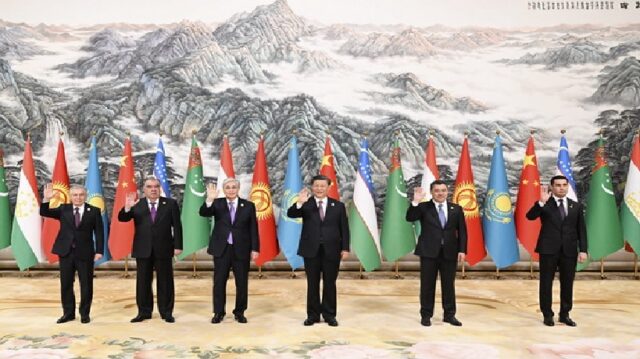NEW DELHI: First a history lesson: in May 1989 the late Chinese leader Deng Xiaoping hosted then USSR President Mikhail Gorbachev in Beijing and in the course of their conversation said: Russia had a sphere of influence around north-eastern China centred on Harbin, and Russia through unequal treaties received more than 1.5 million square kilometres of Chinese territory (Siberia). The Soviet Union had also captured the islands on the Amur and Ussuri rivers.
Note the Chinese leader’s words: “I only expressed my views in order that the Soviet comrades better understand the Chinese side.”
Last week, those words must have resonated with both sides as China and Russia signed an agreement allowing the former use of Vladivostok Port, ceded to Russia by the Qing emperor in 1861.
As a former Indian diplomat noted, “China had been pressing for trade through Vladivostok for many years, it’s a measure of how distracted Russia is by the Ukraine war that they have now agreed to it. Incidentally, there are also two bridges on the Amur river to facilitate trade.”
Ashok Sajjanhar, who was India’s ambassador in Kazakhstan, believes the port will serve as a key trading hub between Europe and Asia. “It will help China move that much closer to having a stronger presence in the Arctic. China has already been developing icebreakers to access the Northeast passage from its east coast to the Arctic and from there it can access North Europe. It will also help China resolve its ‘Malacca Dilemma’”.
By itself, China trading through Vladivostok may not mean much, but Beijing sees Siberia as its own, all 13 million sq. km of land rich in timber, oil and gas and other resources. Incidentally, China also claims Mongolia as its own and as another diplomat underscored, “The Chinese have patience, infinite patience and as the Ukraine war debilitates Russia with the US doing its best to accelerate that process, the mandarin in Beijing will make his move at the appropriate time.”
What about Central Asia for whose leaders China rolled out the red-carpet last week in the ancient city of Xian. No Russian leader was invited, an omission that raised eyebrows given Moscow sees this region as its “Near Abroad”, within its zone of influence. Russia even has the Eurasian Economic Union, a bloc which has moved somewhat fitfully towards economic and customs integration, but China appears determined to have the region lock, stock and barrel.
The security provisions wherein China promised to “strengthen the capacity of law enforcement, security and defense”, were picked up by Russia’s media. They saw it as reflecting Xi Jinping’s intent to realign the region away from Russia. At Xian, China and the leaders of five Central Asian states, Kazakhstan, Kyrgyzstan, Tajikistan, Turkmenistan and Uzbekistan also agreed on a set of regional initiatives to boost cooperation and development. Chinese ministries will be linked to those in Central Asia, focus on educational and cultural exchanges and the creation of business councils that may end up consolidating China’s dominant role.
Here in Delhi, a senior Russian diplomat StratNews Global spoke to said his country had “full faith that China will not go against our interests in Central Asia. We were briefed on all the discussions that took place and all the developments that will take place in Central Asia will benefit us.”
The diplomat was expressing what can only be a pious hope. Where does this leave India? Delhi knows full well that if China takes over Central Asia, India will be completely excluded from the region. Russia’s hold over Central Asia is India’s best hope for a role there.
Delhi has also stepped up its diplomacy in the region, with a Central Asia dialogue launched in 2019, and summits with its foreign ministers in 2020 and 2021. There was also a virtual summit of heads of state last year. But Sajjanhar notes that “We need to be aware of other players and Turkey’s role will be especially significant here. Not only was it present at the SCO summit in Samarkand last year, but President Erdogan was also present personally in Astana for the CICA summit held in Astana last year. We need to take note of this.”
He believes India has much to offer the region including experience in dealing with radicalism and terrorism. India can also tap into Central Asia’s discomfort with China’s shadow looming over them.
But is India clear about what it wants from the region? Sajjanhar points out that Central Asia could play a crucial role in India’s energy security. Turkmenistan has the fourth largest gas reserves in the world while there are significant reserves of oil, gas and uranium in Kazakhstan. India however lacks physical connectivity to Central Asia, and the route to the region through Chahbahar in Iran will be constrained by Delhi’s repeated kowtowing to US economic and other embargos on the Islamic republic. Tehran as a neighbour will have its own plans for the region that could include working with China. A new Great Game is unfolding and it’s not clear if India has a vision, plan, or intent.
Related Stories on StratNews Global:
















